Gluten-Free Ciabatta Recipe

Ciabatta, a classic Italian bread, has long been a staple in many households. However, for those with gluten intolerance or sensitivity, enjoying this delicious bread has been off-limits. Fortunately, with the rise of gluten-free baking, it’s now possible to indulge in gluten-free ciabatta that’s just as tasty as its traditional counterpart. In this article, we’ll delve into the world of gluten-free ciabatta, exploring its history, benefits, and tips for making it at home.
Read Also: The Perfect Mac ‘n Cheese Recipe
Table of Contents
History of Ciabatta
Ciabatta, which translates to “slipper” in Italian, originated in Italy in the 1980s. This airy, crusty bread quickly gained popularity worldwide for its versatility and flavor. Traditionally made with wheat flour, water, salt, yeast, and olive oil, ciabatta is known for its open, chewy crumb and distinctive shape. However, its gluten content made it off-limits for those with gluten intolerance or sensitivity.
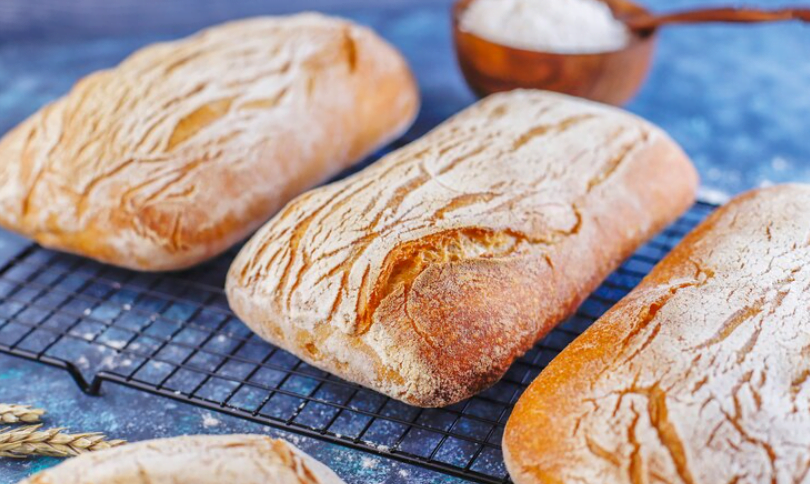
The Rise of Gluten-Free Ciabatta
As the demand for gluten-free products grew, bakers and chefs began experimenting with gluten-free flours to recreate traditional breads like ciabatta. Gluten-free ciabatta is made with alternative flours like rice, corn, or potato, which are naturally gluten-free. These flours are often combined with xanthan gum, a thickening agent that helps replicate the texture and structure of traditional bread.
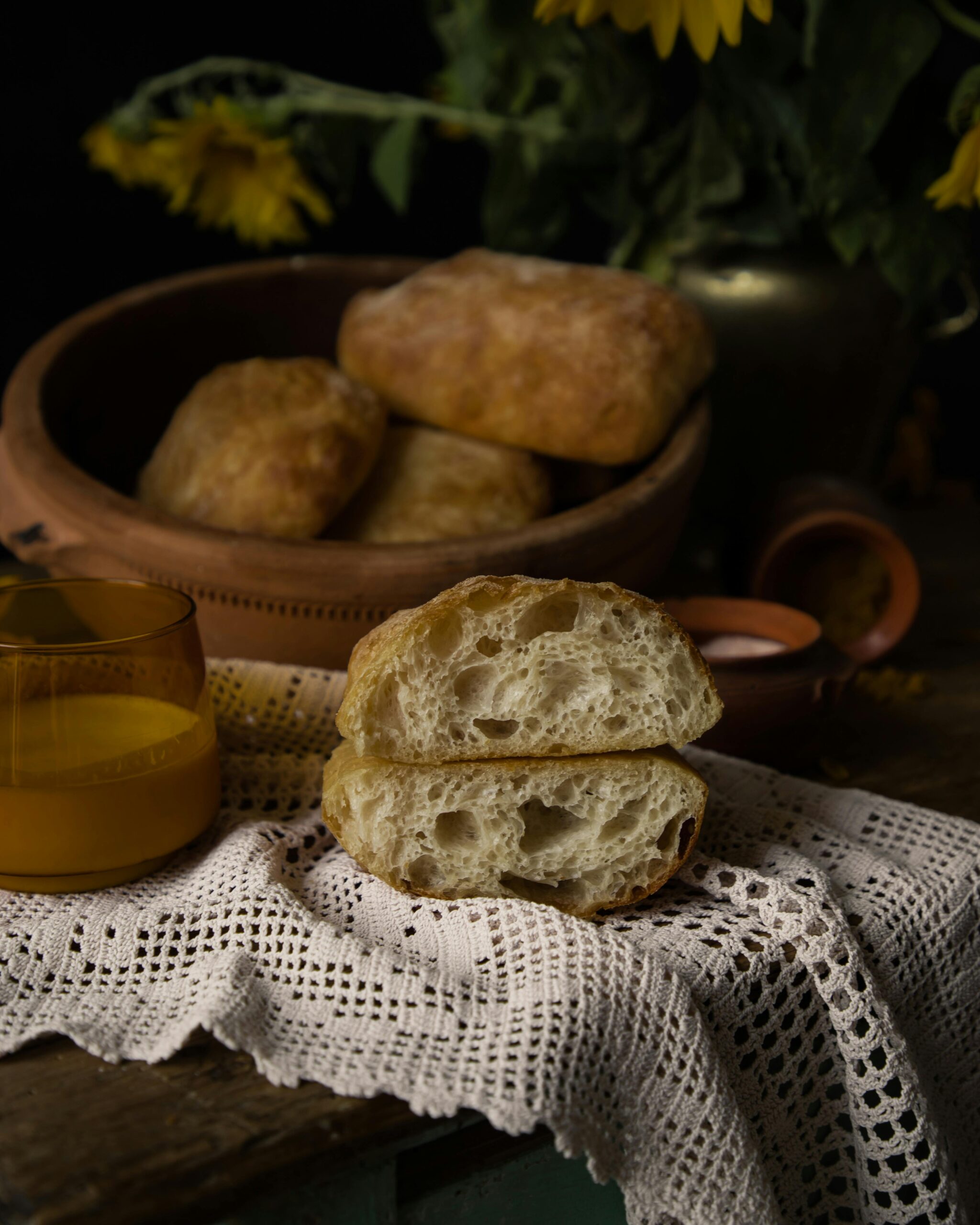
Gluten-Free Ciabatta Recipe
Description
Our gluten-free ciabatta recipe yields a deliciously light and airy Italian bread, perfectly crispy on the outside and soft on the inside. Made with a blend of gluten-free flours, potato starch, and tapioca flour, this bread is a game-changer for those with gluten intolerance or sensitivity. With a subtle sweetness and a hint of olive oil, this ciabatta is perfect for sopping up sauces, olive oil, or enjoying on its own. Our recipe uses xanthan gum to enhance texture and structure, making it a great option for sandwiches, toast, or as a side to your favorite meals. Enjoy the delightful taste and texture of traditional ciabatta, now accessible to all!
Ingredients
Instructions
- In a large mixing bowl, combine the gluten-free flour, potato starch, tapioca flour, xanthan gum, salt, sugar, and yeast.
- Gradually add the warm water, mixing until a shaggy dough forms.
- Add the olive oil and continue to mix until the dough comes together in a sticky ball.
- Knead the dough for 10-12 minutes, until it becomes smooth and elastic.
- Place the dough in a greased bowl, cover it with a damp cloth, and let it rise in a warm, draft-free place for 1-2 hours, or until it has doubled in size.
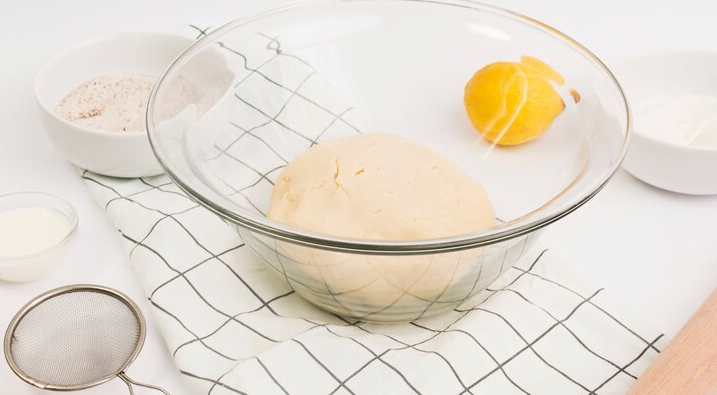
- Preheat your oven to 400°F (200°C).
- Punch down the dough and shape it into a long, thin rectangle.
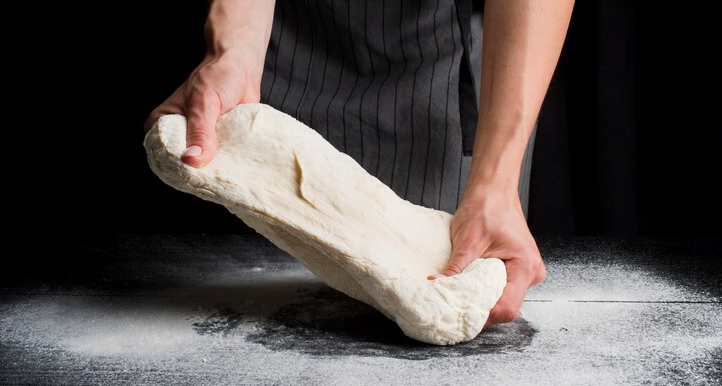
- Place the dough on a baking sheet lined with parchment paper, leaving about 1 inch of space between each loaf.
- Bake for 20-25 minutes, or until the bread is golden brown and sounds hollow when tapped.
- Remove the bread from the oven and let it cool on a wire rack for at least 10-15 minutes before slicing.
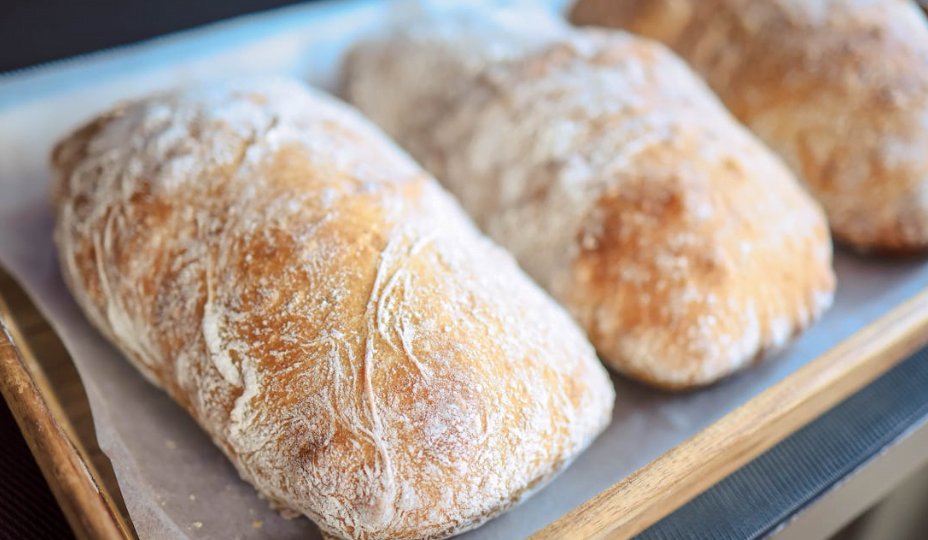
Notes
- This gluten-free ciabatta recipe is a delicate process, and precise measurements and instructions are crucial to achieve the right texture and structure. Make sure to use a digital scale to measure ingredients accurately, and adjust the recipe according to your gluten-free flour blend’s specific instructions. Also, be patient and allow the dough to rise for the full 1 hour and 15 minutes to ensure the best results. With a little practice and patience, you’ll be enjoying delicious homemade gluten-free ciabatta in no time!
Tips and Variations
- To enhance the flavor, try adding 1-2 tablespoons of chopped fresh rosemary or 1/4 cup of grated Parmesan cheese to the dough.
- For a crispy crust, bake the bread for an additional 5-7 minutes.
- Experiment with different gluten-free flours, such as almond or coconut flour, to create a unique flavor profile.
Nutritional Information
Here is a more detailed breakdown of the estimated calories per serving for the gluten-free ciabatta recipe:
Calories Per Serving:
- Total Calories: 120-150 per serving
- Macronutrient Breakdown:
- Carbohydrates: 25-30g (90-100 calories)
- Protein: 2-3g (8-12 calories)
- Fat: 2-3g (18-27 calories)
- Fiber: 2-3g
- Sugar: 1-2g
- Sodium: 200-250mg
Note: The exact calorie count will depend on the specific ingredients and portion sizes used. This estimate is based on average values for each ingredient and a serving size of 1 slice (approximately 30g).
Here’s a more detailed calculation:
- 1 cup gluten-free flour: 120 calories
- 1/4 cup potato starch: 25 calories
- 1/4 cup tapioca flour: 25 calories
- 1 teaspoon xanthan gum: negligible calories
- 1 teaspoon salt: negligible calories
- 1 tablespoon sugar: 45 calories
- 1 packet active dry yeast: negligible calories
- 1 cup warm water: 0 calories
- 2 tablespoons olive oil: 190 calories
Total calories in the recipe: approximately 445 calories
Divided by 8-10 servings: 44.5-55.6 calories per serving
This estimate does not include any additional ingredients or toppings that may be added to the bread.
Frequently Asked Questions (FAQ)
What type of gluten-free flour blend should I use?
Use a high-quality gluten-free flour blend that contains a mix of rice flour, potato starch, and tapioca flour.
Can I use almond flour or coconut flour instead?
No, almond flour and coconut flour have different properties and may not produce the same texture and structure.
How do I store gluten-free ciabatta?
Store in an airtight container at room temperature for up to 3 days or freeze for up to 2 months.
Can I make this recipe in a bread machine?
Yes, you can make this recipe in a bread machine, but adjust the yeast amount and cycle settings according to the manufacturer’s instructions.
Why did my ciabatta turn out dense and flat?
Check your yeast expiration date, ensure proper rising time, and adjust your gluten-free flour blend if necessary.
Can I add flavorings like herbs or cheese to the dough?
Yes, you can add flavorings like herbs, cheese, or nuts to the dough for extra flavor.
Is this recipe suitable for vegans?
Yes, this recipe is vegan-friendly, but ensure your gluten-free flour blend and yeast are vegan-friendly too.
Can I make this recipe in a different size?
Yes, you can adjust the recipe to make smaller or larger loaves, but adjust the baking time accordingly.
Conclusion
With our gluten-free ciabatta recipe, you can now indulge in the delicious taste and texture of traditional ciabatta, without the gluten. Whether you’re a seasoned baker or a gluten-free newbie, this recipe is sure to become a staple in your kitchen. So go ahead, get baking, and enjoy the delightful experience of biting into a freshly baked, gluten-free ciabatta
